So, if you examine a cast iron skillet under a microscope, you’ll notice a variety of microscopic pores, fissures, and surface irregularities. Part 1 gives you an explanation of why.
Food can stick when it cooks because of the moisture that seeps into these crevices. Furthermore, when proteins come into contact with metal, they can create chemical connections. Ever had a piece of a fish split in half during cooking because it appeared to be attached to the pan? That’s accurate, as it has been.
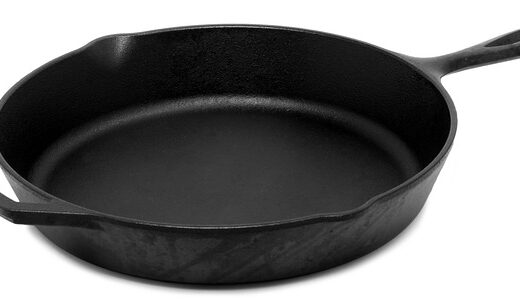
Filling in the tiny pores and adding a barrier above the pan’s bottom to keep protein from touching it are the only ways to stop both of these things from happening.
There is fat.
Fat turns into a solid substance that resembles plastic and coats the pan when heated. This coating becomes thicker, and the pan’s nonstick characteristics improve when additional oil is heated.
How to add the first layer of protection to your skillet.
Pour a half cup of kosher salt into your pan and scrub it with a paper towel. Any dust and pollutants that might have accumulated in it prior to usage will be scrubbed out by doing this. It should be properly cleaned with hot, soapy water and then thoroughly dried. Use a paper towel dipped in highly unsaturated fat, such as corn, vegetable, or canola oil, to wipe over each surface of your pan.
Unsaturated fats polymerize better because they are more reactive than saturated fats (such as shortening, lard, or other animal-based fats). It’s a common misconception that lard or bacon fat makes the best seasoning agents, presumably because they were inexpensive when cast iron was at its peak.
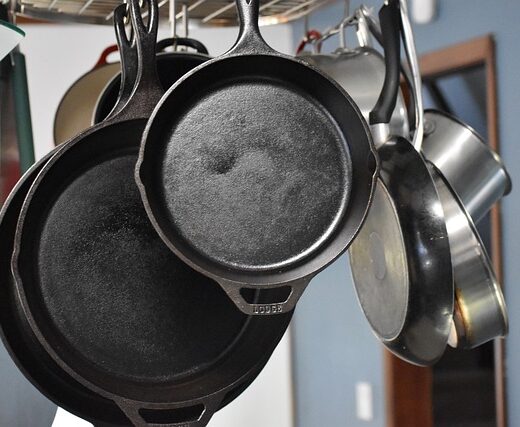
In a 450°F oven, heat the pan for 30 minutes (it may smoke) until the surface is noticeably darker than when you started. The pan will cook more evenly in an oven than on a stovetop, resulting in a superior initial seasoning layer. Repeat the heating and oiling processes three to four times until the pan is almost entirely black. Take it out of the oven and set it cooling on the stovetop. Your pan is now prepared and seasoned.
Avoid using a lot of soap or making acidic sauces until you’ve built up a good layer of seasoning because both can prolong the cooking process, and you don’t want to keep beginning over.
Maintenance
Cast iron maintenance instills an absurd amount of fear in people. Cast iron is relatively durable once it has developed a thick layer of seasoning. Metal objects cannot be used to scratch them off. It cannot be destroyed by soaps (modern dish soaps are gentle on everything except grease). It only requires keeping in mind a few essential details to preserve and expand upon.
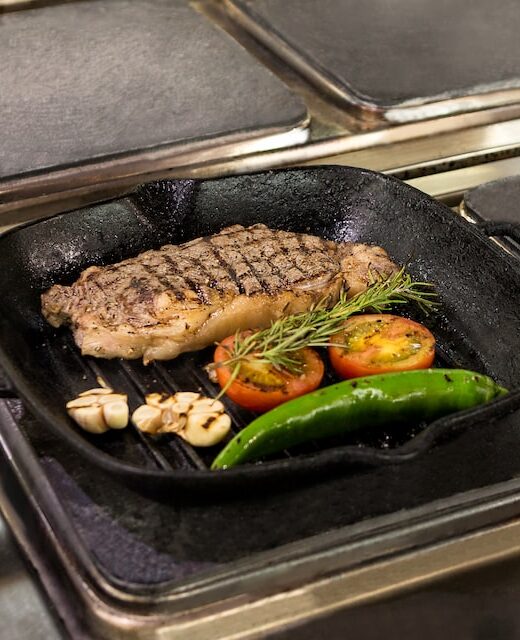
Use them often.
Good polymer layers should accumulate gradually in extremely thin layers. This entails making the most of your pan, especially when performing jobs that require oil, like frying or searing.
Avoid cooking recipes with liquid ingredients until the pan develops a pretty good nonstick surface.
After use, immediately clean it.
Food debris is considerably simpler to remove from a hot pan than from one given time to cool. Most often, all you’ll need to clean your cast iron skillet while it’s still hot is a soft sponge and a tiny bit of liquid soap.
I’m cautious about this at dinner parties since a well-meaning person might try to pitch in after dinner and use too much elbow grease, thereby removing some of my coatings. Avoid harsh abrasives in most situations. These include scouring pads made of metal, Comet cleansers, and Bar Keepers Friend. For most chores, a soft sponge’s scrubby side should be adequate.
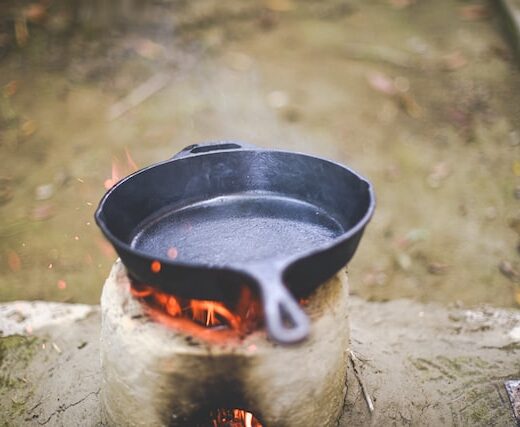
How to store your pan.
Before storing, completely dry it, including the bottom, reheat it, and oil it. After washing my pan, I put it back on the stove to dry and heat it until it barely begins to smoke. Then, I use a paper towel dipped in oil to cover the entire inside surface (you don’t want to start a kitchen fire by coating the bottom too). Once it has reached room temperature, turn off the heat and let it cool. Before being used again, the oil will create a barrier that will stop it from coming into touch with air or moisture.
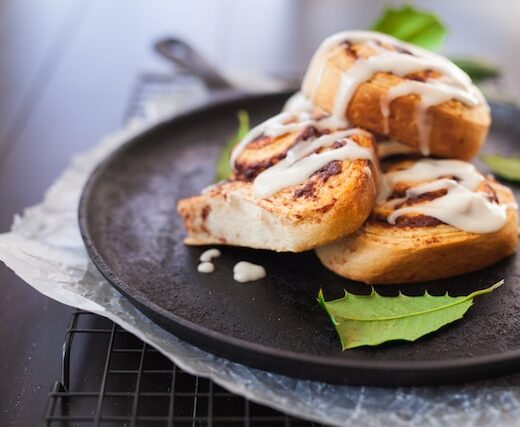
Scaling and Rust
Scaling and rust are the only genuinely terrible things that may happen to your cast iron cookware, yet neither is all that dreadful.
Scaling occurs when a skillet is overheated without additional oil. The layer of polymers peels off in big flakes instead of microscopic particles like regular seasoning would. This issue may be easily avoided by constantly oiling the pan after each use and avoiding overheating it (don’t leave it in the oven during the cleaning cycle, for example). However, once it occurs, there is no turning back; you will need to re-season the pan from scratch.
If a cast iron pan is not seasoned correctly and is allowed to air dry, rust patches may develop. The iron started to rust when it came into touch with water. This one shouldn’t cause you too much concern unless the entire pan has rusted (in which case you’ll need to re-season the whole thing). It should be cleaned with water, dried, heated, and oil-rubbed down. The rusty area should be properly well-seasoned again after a few applications.
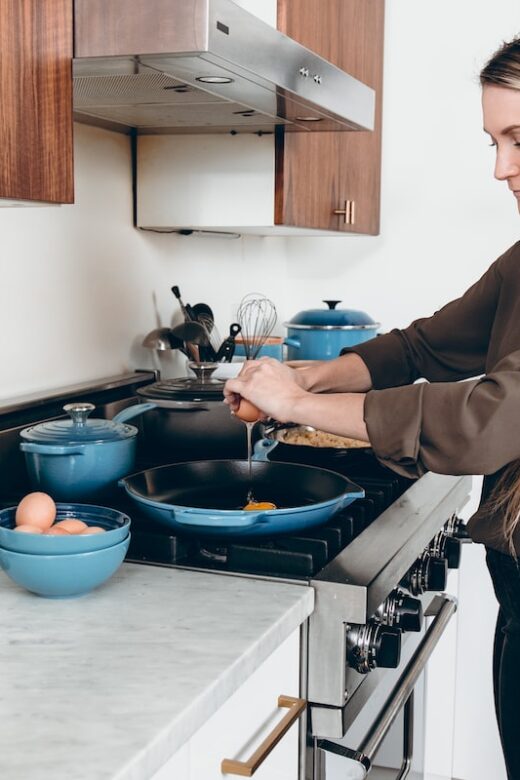
What Pan Should I Purchase?
If you’re fortunate enough to find an affordable early 20th-century cast iron pan at a yard sale or flea market (say, for under $50), buy it right away. Occasionally, you can also find good discounts on eBay and similar websites.
A new cast iron pan, like the Lodge cast iron skillet, costs about $16.00 at Walmart or Target and will provide you with an equally lustrous nonstick surface with little time and care. It is crazy to pay the $150+ that some vendors are asking for old cast iron.

I counted 16 cast iron items in my home, just for the record. I believe I’ve covered every meal that can be prepared with cast iron, but I recently came across a tempting-looking Christmas wreath pan that’s calling my name.
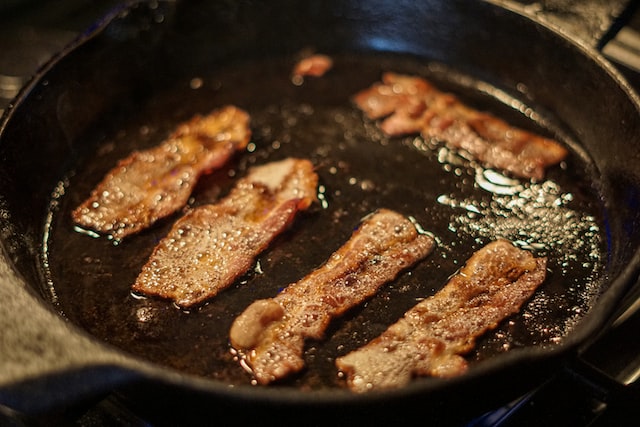
Leave a Reply